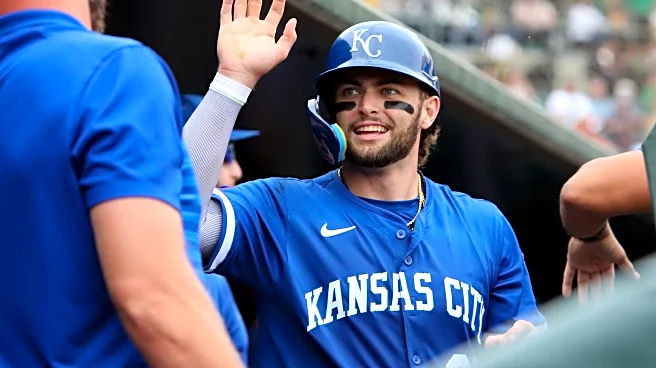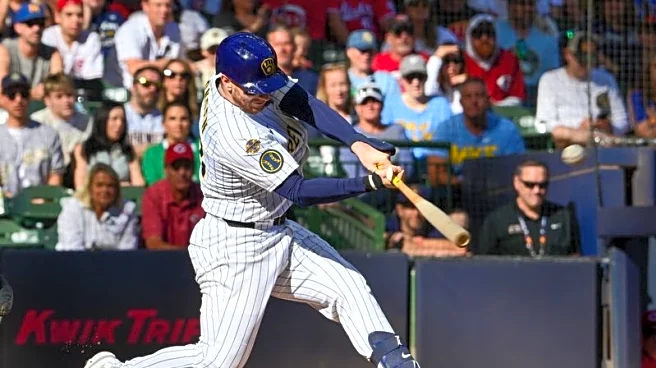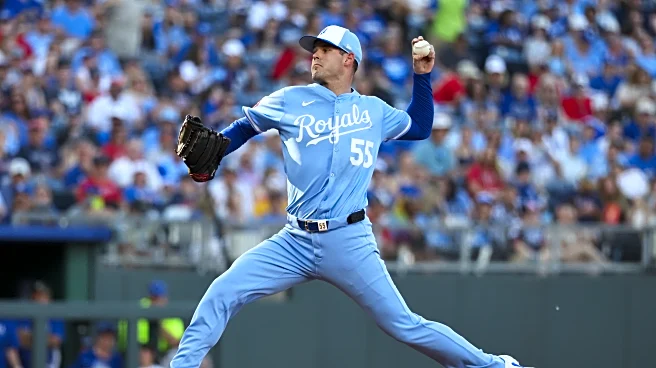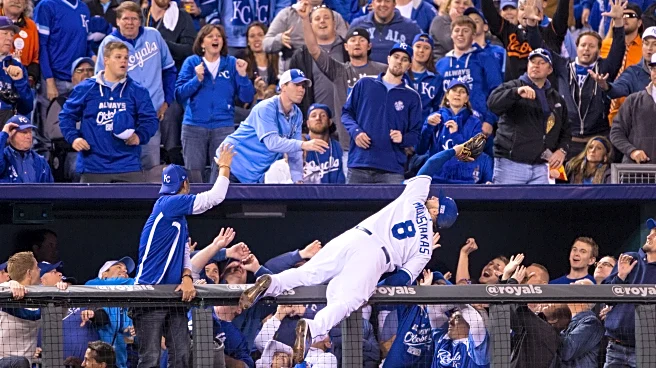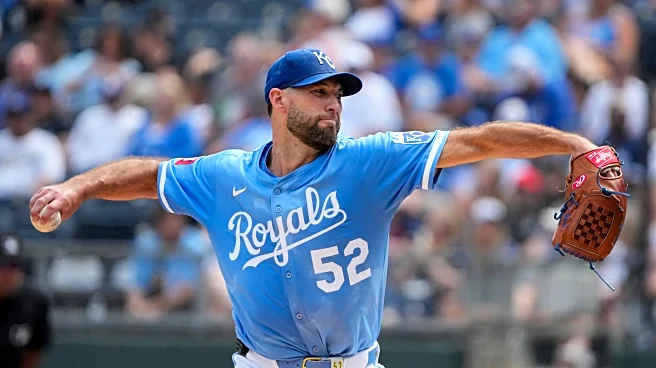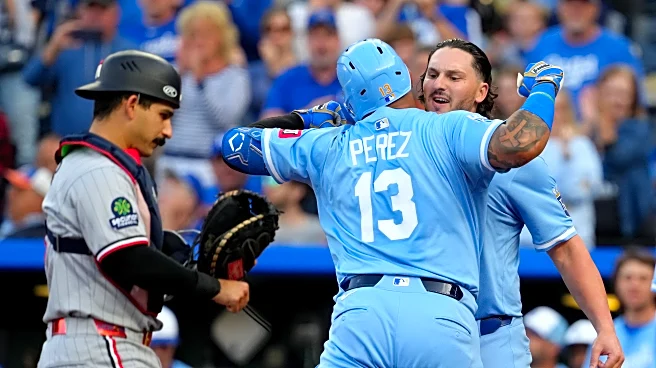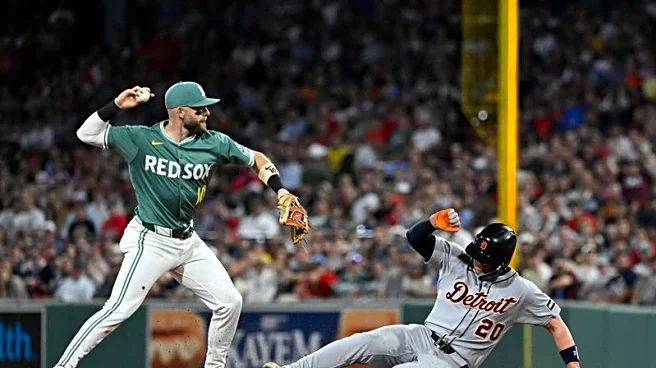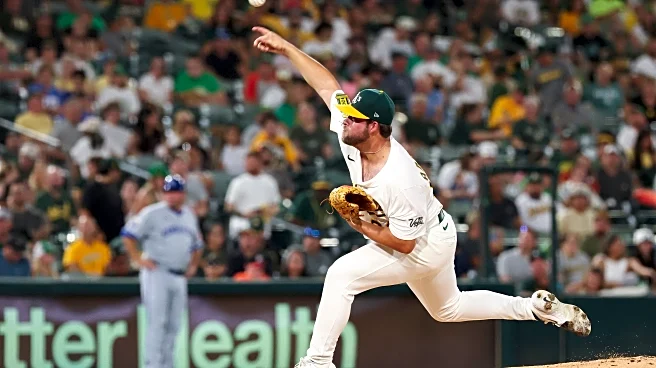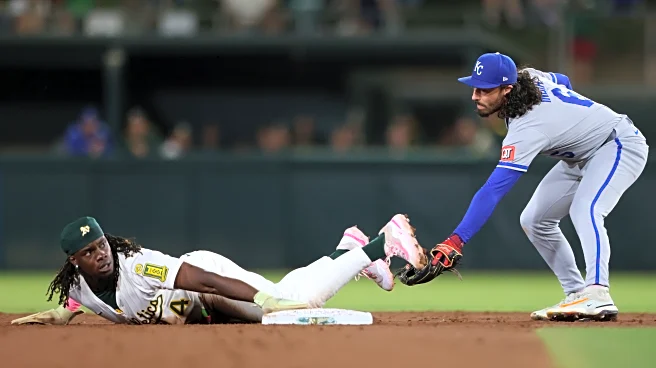The 2025 regular season has reached its conclusion, and for the first time since 2013, the Royals have finished over .500 without reaching the postseason. It’s easy to try and pin it all on one or two
things, but when a team as talented as the 2025 Royals – and they did have a lot of talent, despite their final record! – misses the playoffs, there’s usually a variety of reasons. Here are six of them
No backup plan for MJ Melendez and Hunter Renfroe in March/April
I argued fiercely during the offseason that it made plenty of sense to give MJ Melendez one last shot to show he could be a big league outfielder. But even while making that argument, I was careful to point out that he shouldn’t be the Royals’ primary left fielder in 2025 if they meant to compete for a postseason berth again. Unfortunately, that’s exactly what they did. Even worse, they had no ready options to replace Hunter Renfroe in right field either.
To the Royals’ credit, neither player ended up with much playing time overall, but Melendez still appeared in 16 of the Royals’ first 19 games before he was mercifully demoted. During that span, the Royals went 8-11. Hunter Renfroe played in 22 of the team’s first 31 games through the end of April, during which they went 16-15. Melendez and Renfroe combined to contribute -1.5 fWAR and -2.1 bWAR during their time in Kansas City. Everyone, including the team itself, knew that those two guys weren’t going to be the answer, but once they were stymied on Anthony Santander, Jurickson Profar, and Randall Grichuk, the team failed to develop any kind of backup plan. Drew Waters was recalled on April 10, but came with a net negative career WAR of his own and still had to split time with the other two for a while because KC didn’t have a fourth outfielder they were comfortable playing in the corners. It would be several weeks before they were even willing to try Nick Loftin and John Rave.
As noted above, the Royals finished the month of April with a winning record, but considering how well the team pitched during that time, they should have won more games. Unfortunately, the atrocious offense, anchored by the corner outfielders, proved to be their undoing.
Pitchers were overloaded in May
By the time the Royals reached May, it was clear that if the Royals were going to win, it was going to be due to heroic efforts by the pitching staff. But after a month of providing such heroics, the staff became overwhelmed. Kris Bubic was still fantastic, but Cole Ragans, Seth Lugo, and Michael Lorenzen appeared to feel the pressure and each pitched to above a 4.00 ERA for the month. Ragans and Lugo each missed starts with injuries this month, too. Combining ineffectiveness with injury overloaded relievers such as Angel Zerpa and John Schreiber – both of whom can be effective when utilized sparingly but are easily overexposed. They gave up too many runs in middle relief, which cost the Royals more games.
The offense improved somewhat this month, but not enough to account for the pitching faltering. The Royals still won two more games than they lost, but they could have won more if the pitching staff hadn’t been put under so much pressure.
Drew Waters, Kyle Isbel, and Jac Caglianone got too many dang at-bats in June
Part of the offensive outburst in May came from the fact that Waters had one of the best months of his entire career. But it all came crashing down in June. From June 1 until he was finally demoted again on July 3, Waters slashed .156/.229/.156/.385, good for a 9 wRC+. Still, he played in 25 of the Royals’ 26 games in June, accruing the eighth-most plate appearances on the team.
The Royals also selected Caglianone to make his major league debut this month, and he was almost as bad as Waters in even more plate appearances, though he at least was hitting the ball hard and giving the Royals reasons to think he might snap out of it at any time. Isbel is worth keeping around for his defense most of the time, but the 41 wRC+ meant the team probably could have benefited from playing him less, too.
Meanwhile, the Royals had John Rave and Tyler Tolbert languishing on their bench. No one is going to pretend that either of them was or will ever be a superstar. But both were hitting and running better than the three outfielders getting the most playing time, and they were better defensively than Jac and Drew, too. They were the very model of replacement-level players, while the Royals continued to run out multiple below-replacement-level players on a daily basis.
Between Caglianone, Isbel, Waters, Mark Canha, Nick Loftin, and Michael Massey, the Royals got -2.3 fWAR. Again, it would have been one thing if only the first-round draft pick was struggling, but the Royals had half a lineup on the field that was actively harming the team compared to their bench options, and didn’t do anything about it.
I’ll always wonder how things might have been different for Jac in 2025 if the Royals had played Rave and Tolbert more instead of Waters and Isbel, perhaps giving him a bit more room to find his way instead of watching the team free-fall while he smashed line drives directly at outfielders until he got frustrated and started bashing weak grounders to second.
Jonathan India was still leading off in July
By the time the team made it to July, it was more than obvious that Jonathan India leading off wasn’t going to be their best lineup configuration. Sure, he was better than what they had gotten in 2024, but that’s a bit like saying that drinking mud is superior to raw sewage. Especially when they had a cool glass of water in Maikel Garcia. Through the first three months of the season, India had slashed .247/.322/.341/.663. It was perhaps easy to argue that he wasn’t the real problem with the offense compared to what the outfield had done to them in June, but ensuring he got the most plate appearances every night while batting Maikel Garcia third through fifth in the midst of a breakout campaign (.309/.367/.479/.846 through June) was painful to watch.
And, of course, it also meant Pasquantino and Salvador Perez were batting lower in the lineup than they could have. While Salvy had struggled early on, he absolutely exploded in July. He slashed a ridiculous .337/.379/.719/1.098 – a 196 wRC+!!! – but he was largely doing it from the five-hole.
India, who apparently developed a sprained wrist around the beginning of the month, led the team in plate appearances. That helped lead to Salvy only earning 21 RBIs for the month despite his insane batting stats.
July was the Royals’ best month, so maybe it seems petty to complain, but if they could have won a couple more, it could have changed the entire complexion of the playoff hunt through August and September.
Seth Lugo pitched in August
Lugo and the Royals will both insist the pitcher wasn’t injured until he was, but he still allowed more than a run per inning in six starts in August. Only one of those outings saw him complete as many as five innings, which additionally put a huge strain on a bullpen that couldn’t take it while missing Ragans, Bubic, and Lorenzen due to their own injuries. Remarkably, the Royals won half of the games Lugo started, but how many more might they have won if they had been using Stephen Kolek, who looked pretty good after taking over for Lugo in September? Even beyond the three they lost in large part due to Lugo’s awful pitching, they might have benefited from a significantly better-rested bullpen because Kolek wasn’t just good; he averaged 6.2 innings a start once he joined the big league team.
They played it too safe in September
The Royals were still largely in the thick of things at the beginning of September; at one point, they closed to within one game of a playoff spot. Unfortunately, they decided to play things very safe, from their point of view, even after calling up both Jac Caglianone and Carter Jensen to begin the month. Carter Jensen played in only five of the team’s first ten games of the month; two of those were pinch-hit appearances, the rest as the designated hitter. Things got so bad in a Sunday game against Bailey Ober and the Twins that Royals Review saw not one but two articles the following day criticizing the Royals’ unwillingness to put out a lineup worth the paper it was written on.
Once the Royals lost three of four in Cleveland, their playoff hopes were pretty much kaput, and they started letting Carter Jensen catch. He ended up slashing .300/.391/.550/.941 with three home runs for the month of September.
Perhaps even more importantly, Salvador Perez slashed .146/.146/.341/.487 while Carter sat on the bench, and once the rookie got more playing time, Perez finished the season slashing .246/.292/.526/.818 with five home runs. And, just to drive home the mistake that was the July batting order, Salvy got 19 RBIs from September 12 – that’s two fewer RBIs in ten fewer games than his crazy July – because his leadoff hitters were giving him much better opportunities to bat with runners on.
Before Jensen started playing regularly, the Royals were 4-6 to start the month, but then finished the year with an 8-7 stretch. We’ll never know for sure how much of a difference it would have made to play Jensen more immediately, but we know that playing Luke Maile benefited no one.
It was a mistake to enter this season without better options for the lineup, and it was a mistake not to be quicker to take advantage of the opportunities that did present themselves as the season went along. In the end, the Royals missed the playoffs by only five to six games (depending on whether some of those wins had come against the Tigers). As I insisted throughout the year, the Royals’ lineup issues were so atrocious that they didn’t need to add an All-Star to make up that difference; just stop shooting themselves in the foot by playing guys worse than the average minor league journeyman.
One thing the Royals never used to do for decades, except occasionally while Ned Yost was manager, was learn from their mistakes. No one is perfect, we all make mistakes, but the best among us learn from those mistakes and repeat them only rarely going forward. In 2024, General Manager J.J. Picollo proved he could learn from the mistakes made by his predecessor. That led to a playoff berth in only his second season running the team. The next year should be an opportunity for him to prove not just that he can learn from the mistakes of others, but also from his own. Dayton Moore never did that well enough to return to the postseason after 2015 despite being given nearly a decade to do so. I have high hopes that Picollo won’t make me write this list again next year.

